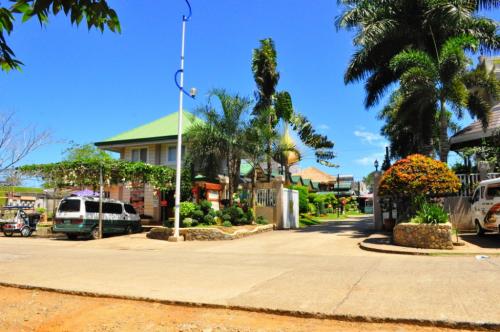
Another tourist destination is the mangrove forest in barangay Panadtaran, Candijay, Bohol. The forest is a wide 1,472 hectares, 600 hectares of which was awarded by the Department of Environment and Natural Resources to the Panadtaran Mangrove Association or PAMAS in 1999.
The group is composed of local residents, mostly fishermen and farmers who organized themselves in 1996.
The Candijay mangrove forest is one of the most diverse in the country and boasts of at least 36 species. Some of the mangrove trees are century-old and look gaunt and old. Majority of the trees are of the “bakauan” type (Rhizophora Stylosa) who has arching stilt roots emerging from the trunk. In Greek, Rhizophora Stylosa means “root bearer”.
The bakauans generally live in inter-tidal areas which are inundated daily by the tides and have adapted to brackish water conditions and are salt-tolerant. These trees develop into tall trees. The roots hold up the tree in soft mud and help the tree to breathe. With roots emerging from the branches, the tree looks very attractive. Mangrove specie also found along the rivers of Candijay is the nipa palm. It has a horizontal trunk that grows beneath the ground and only the leaves and the flower stalk grows upward above the surface. It cannot be considered a tree, although the leaves can extend up to 9 m (30 ft) in height. The flowers are a globular inflorescence of female flowers at the tip with catkin-like red or yellow male flowers on the lower branches. The flower yields a woody seed, these arranged in a cluster compressed into a ball up to 25 cm (10 in) across on a single stalk. The ripe seeds separate from the ball and are floated away on the tide, occasionally germinating while still water-borne. The thick bakauan mangrove forest has become a bird sanctuary aside from it being a habitat for the fishes and other marine life. The area has become a spawning ground, a nursery, as well as feeding ground and shelter to the hundreds of fish species, crustaceans and invertebrates found in the area. The tangled and intricate root systems provide a safe place for this marine life to grow, away from many predators of the sea. The muddy waters around the mangroves are the main source of food. It is rich in nutrients coming from leaves that fall into the waters, decomposes and is covered by large amounts of small organisms which coats the leaf particles and becomes food.
Source: